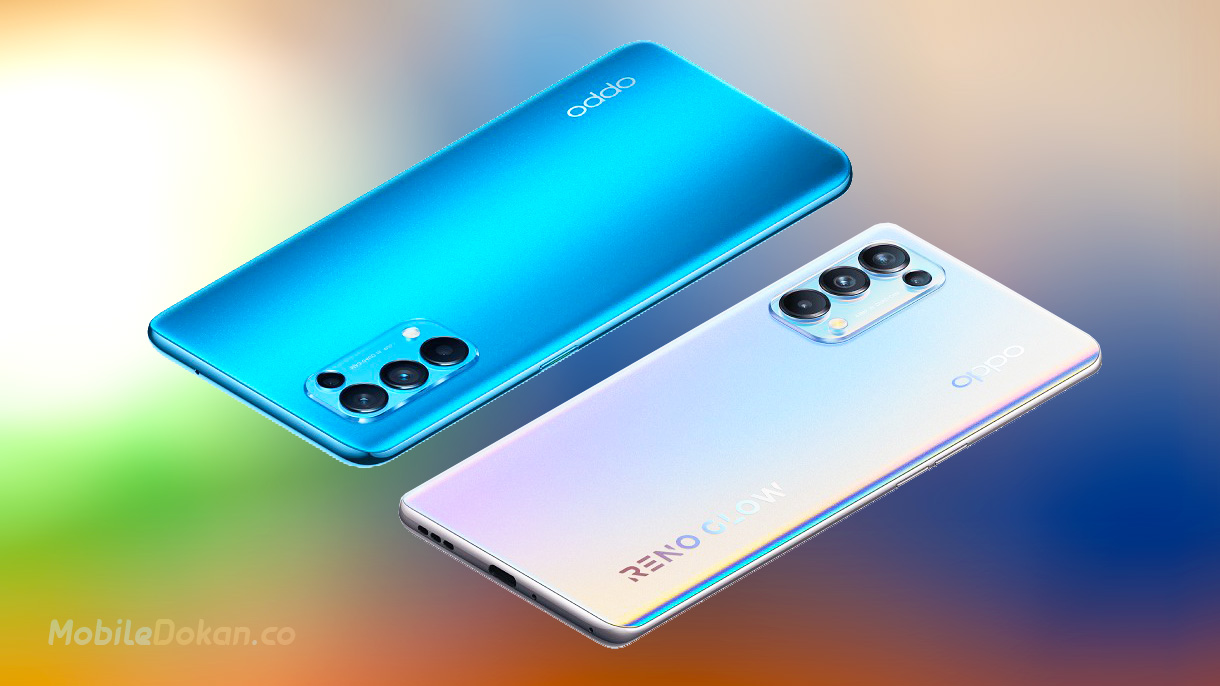The Reno5 series is now live with two initial models. They are nearly identical with the chipset being a major difference – as expected, it’s a mix of Snapdragon and Dimensity. The phones will run ColorOS 11 based on Android 11 out of the box.
Price of Reno 5 series
- Oppo Reno 5 5G: The Oppo Reno5 5G goes for the Snapdragon 765G chipset instead-but comes with the same memory options, 8/128GB and 12/256GB. This one is also up on pre-order at a price of CNY 2,700 ($410/€340), CNY 3,000 if you want the extra RAM and storage.
- Oppo Reno 5 Pro 5G: The Oppo Reno5 Pro 5G contains the MediaTek Dimensity 1000+ chipset and is coming in 8/128GB and 12/256GB configurations. The phone is available for pre-order, starting at CNY3,400 ($520/€430). The higher memory option will set you back CNY 3,800.
Storage
Storage on both phones is UFS 2.1 with 2 lanes, RAM uses LPDDR4x chips – the Pro gets the faster RAM (3,733 MHz, 4x 16 bit) compared to the vanilla (2,133 MHz, 2x 16 bit).
Display
The displays are the other notable difference between the two. The Pro model has a larger 6.55” panel, while the vanilla phone gets a 6.43” panel. Both are OLED displays with 1080p+ resolution and 90Hz refresh rate (plus 180 Hz touch sampling rate). But the Pro display has higher brightness – 500 nits maximum vs. 430 nits.
Camera
The camera department has a 64MP main module with an f/1.7 aperture electronic image stabilization (EIS). It is accompanied by an 8MP ultrawide angle camera, plus two 2MP modules. And, Video recording is capped at 30 fps when shooting in 4K resolution on both phones.
On the front, the selfie camera is 32MP which is in the display punch. It handles face unlock as an alternative to the in-display fingerprint reader.
Battery
The Reno5 duo has 4,300 mAh batteries (16.64 Wh typical capacity). They support SuperVOOC 2.0 charging, meaning 65W peak speed. They can also use USB Power Delivery and QuickCharge chargers at 18W. Also, they have a reverse charging capability.
Other Features
Charging is done over the USB-C port. which doubles as a headphone jack on the Pro phone. Not so on the vanilla Reno5, it has an actual 3.5 mm jack. The trade-off is that the Pro has more advanced wireless connectivity, including Wi-Fi 6 and NFC (vs. Wi-Fi 5 and no NFC).
Certainly, both phones have 5G connectivity (as you can tell by their names), though only the first of the two SIM slots supports it. There’s no memory card slot.
Rear design and color
Oppo reworked the Reno Glow finish for the back. The glass is etched to produce a pattern of microscopic pyramids, which creates a fingerprint-resistant surface. Nano-films with different refractive indices using for creating a multi-color starfield.
For an extra fun twist, a fluorescent coating has applied to the camera bump and other elements so they glow in the dark.
